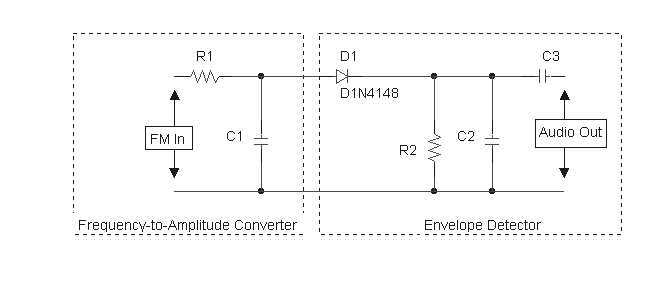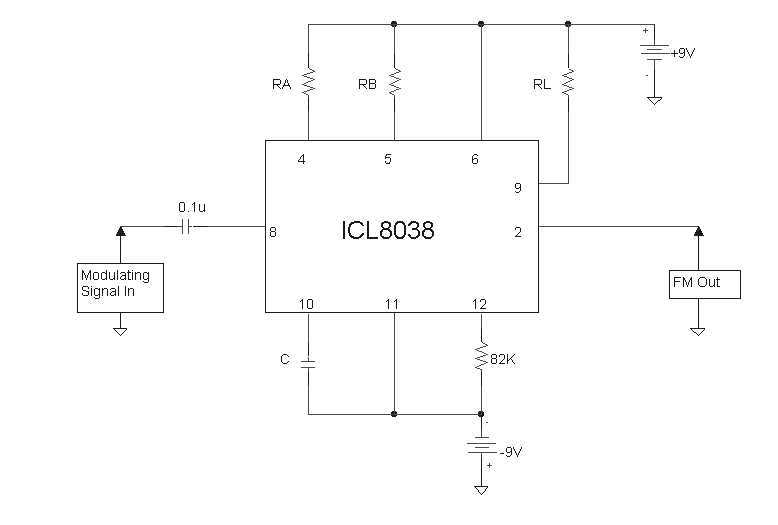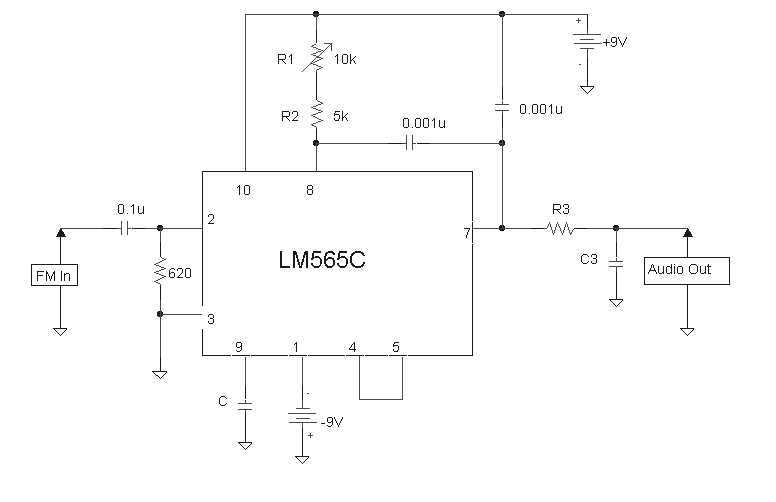Electrical Communications Systems
Course No. 0909-331-01
Spring 2005
Laboratory Project 3
Frequency Modulation and
Detection
Objectives
This project has 3 parts. In Part 1,
you will investigate the performance of the slope detector. In Part 2,
you will generate FM bandpass signals using the ICL8038 Precision
Waveform
Generator/Voltage Controlled Oscillator. In Part 3 you will use the
LM565
Phase-locked-loop for demodulating FM signals.In all parts, you will
test
the system with single-tone FM ( w and w/o added Gaussian noise) and
multi-tone
FM signals (w/o added noise).
Equipment and Software
- HP
33120A Function Generator/Arbitrary Waveform Generator
- HP
54645A Oscilloscope
- HP8591EM EMC Analyzer/ HP Infinium
Oscilloscope /HP
54657A FFT Module.
- 1N4148 Fast Switching Diode
- ICL8038 Precision Waveform
Generator/Voltage
Controlled
Oscillator. Download data-sheet.
- LM565 Phase-locked-loop. Download data-sheet.
- Assorted Resistors and Capacitors (based
on
design).
- PC speakers
- MATLAB
- HP IntuiLink Suite, HPVEE or Matlab
Instrument Control
Toolbox
- Audio Player Software on PC
- CD with your favorite music!
Project Requirements
Part 1
- Design the slope detector circuit shown
in
Figure
1. The slope detector is nothing but a frequency-to-voltage converter
followed
by an AM envelope detector.The design equation for the
frequency-to-amplitude
converter is fco1 = 1/(2pR1C1)
where fco1 is the cut-off frequency of the low-pass filter R1C1
. fco1 is chosen to be at the carrier frequency of the FM
signal.
The design equation for the envelope detector circuit is similar and
was
provided in Lab Project 2. As before, C3
is a coupling capacitor, chosen such that C3 >> C2
. As part of your initial design parameters, you can choose an FM
carrier
frequency of 30kHz and a maximum modulating frequency of 15 KHz to
design
your circuit.

Figure 1: Slope detector circuit.
- Using the HP Arb. Function Generator,
generate an
FM wave with carrier frequency of 30 kHz and modulation frequency
1 kHz (single tone).
- Vary the frequency deviation and
observe
the input
and output waveforms.
- Vary the modulating frequency and
observe
the input
and output waveforms.
- Determine the range of performance of
the
slope detector,
in terms of modulation frequency and modulation index.
- Digitally capture samples of the input
and
output
waveforms in this range
- Perform a spectral analysis of these
input
and output
waveforms.
- Listen to the output signal using the
PC
speakers.
Compare with the pure tone of the same frequency.
- Repeat the experiment by digitally
synthesizing FM
signals with varying SNR. Figure 2 shows the overall block diagram for
this part of the lab project.
- At each stage, note your obervations and
conclusions.
Part 2
The obective is to generate single- and
multi-tone
FM signals using a voltage controlled oscillator and observe the
waveforms
in the time and spectral domains.
- Implement the Frequency Modulator circuit
shown in
the data sheet (reproduced in Figure 2 below). The output of the VCO
when
no modulation is applied (i.e. the carrier frequency) is given by f =
0.33/RC,
where R = RA = RB = RL.Design the
circuit
for a carrier frequency of 30 kHz. Test the system response by feeding
a 1-Hz audio-frequency tone to the FM sweep input pin. Observe the
waveforms
on the oscilloscope.

Figure 2: Frequency modulation application circuit from
ICL8038
data-sheet
.
- Experiment with varying the modulating
signal
frequency
and amplitude. Oberve the input and output waveforms.
- Determine the range of modulation indices
and
modulating
frequencies at which this circuit will operate.Digitally capture a few
input/output waveforms in this range and perform spectral analysis.
Confirm
your obervations with theoretical predictions.
- Experiment with feeding in multi-tone
modulating
signals at the modulating signal input of this circuit.
- Use the slope detector circuit you have
designed
in Part A to recover the baseband signal (for both single- and
multi-tone).
Observe and listen.
Part 3
The obective is to generate an FM signal using
a voltage controlled oscillator and observe the waveforms in the time
and
spectral domains.
- Design the test circuit shown in Figure
3.
Choose
the free-running frequency of the PLL equal to the carrier frequency of
the FM signal. The design equation is f0 = 0.3/RC, where R =
R1 + R2.

Figure 3: FM demodulator circuit using the LM565 PLL.
- Test the circuit by feeding in an
FM
signal
from the arbitrary function generator, observe (waveform and spectrum)
and listen to the audio output.Vary the input signal amplitude, the
modulating
signal frequency and the modulation index.Experiment with the capture
range
and lock range of the PLL.
- Test the product detector circuit by
feeding
digitally
synthesized FM signals with varying SNR. When does the demodulator fail
to detect the message signal?
- Link the modulator-demodulator circuits
and
observe
signal progression from input to output. You will need to use an op-amp
buffer circuit between the two circuits so that the demodulator does
not
load the VCO.
Part 4: XTRA CREDIT
Coming soon!
Required Reading
- Sections 4.13, 4.14 and 5.6 of textbook.
Click here for required lab project
report format.



